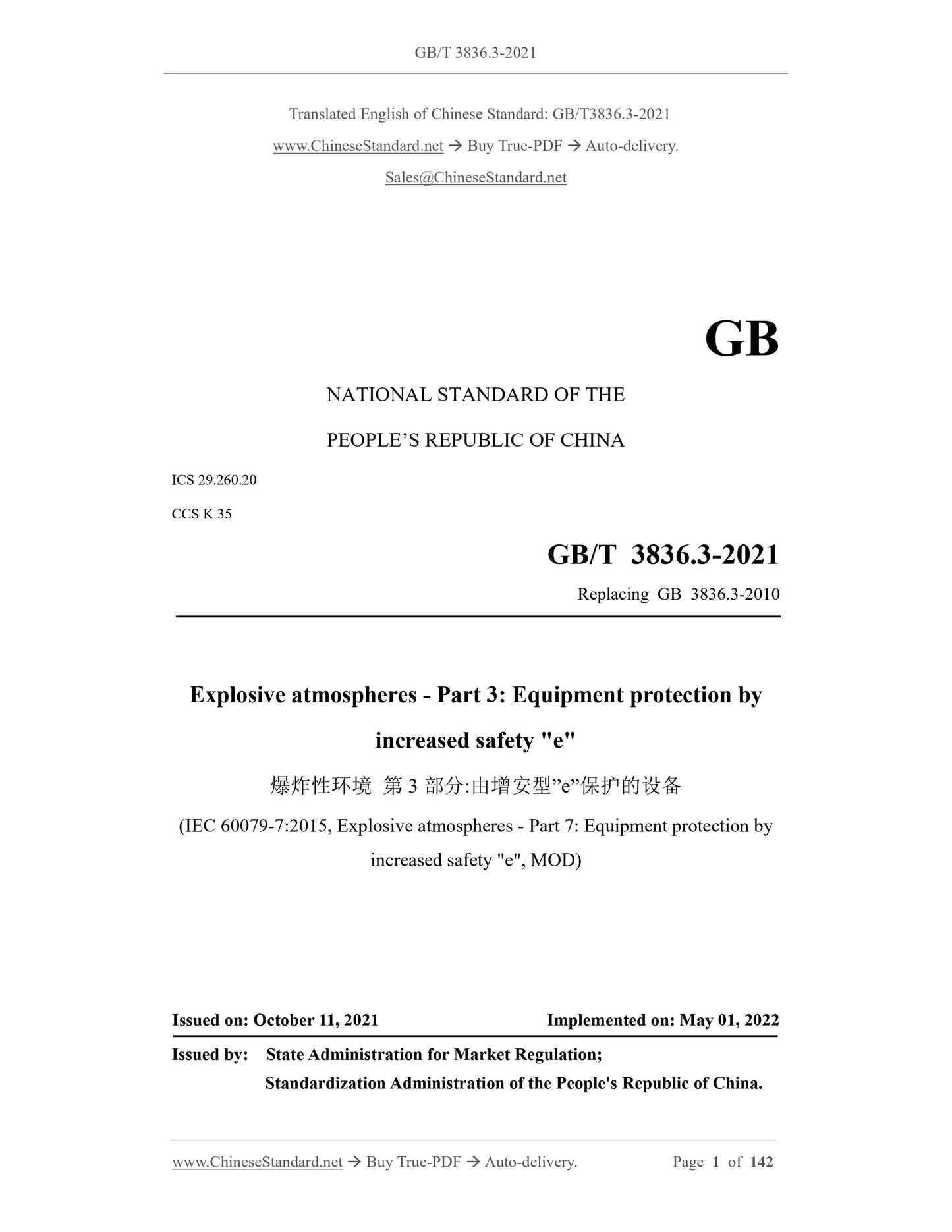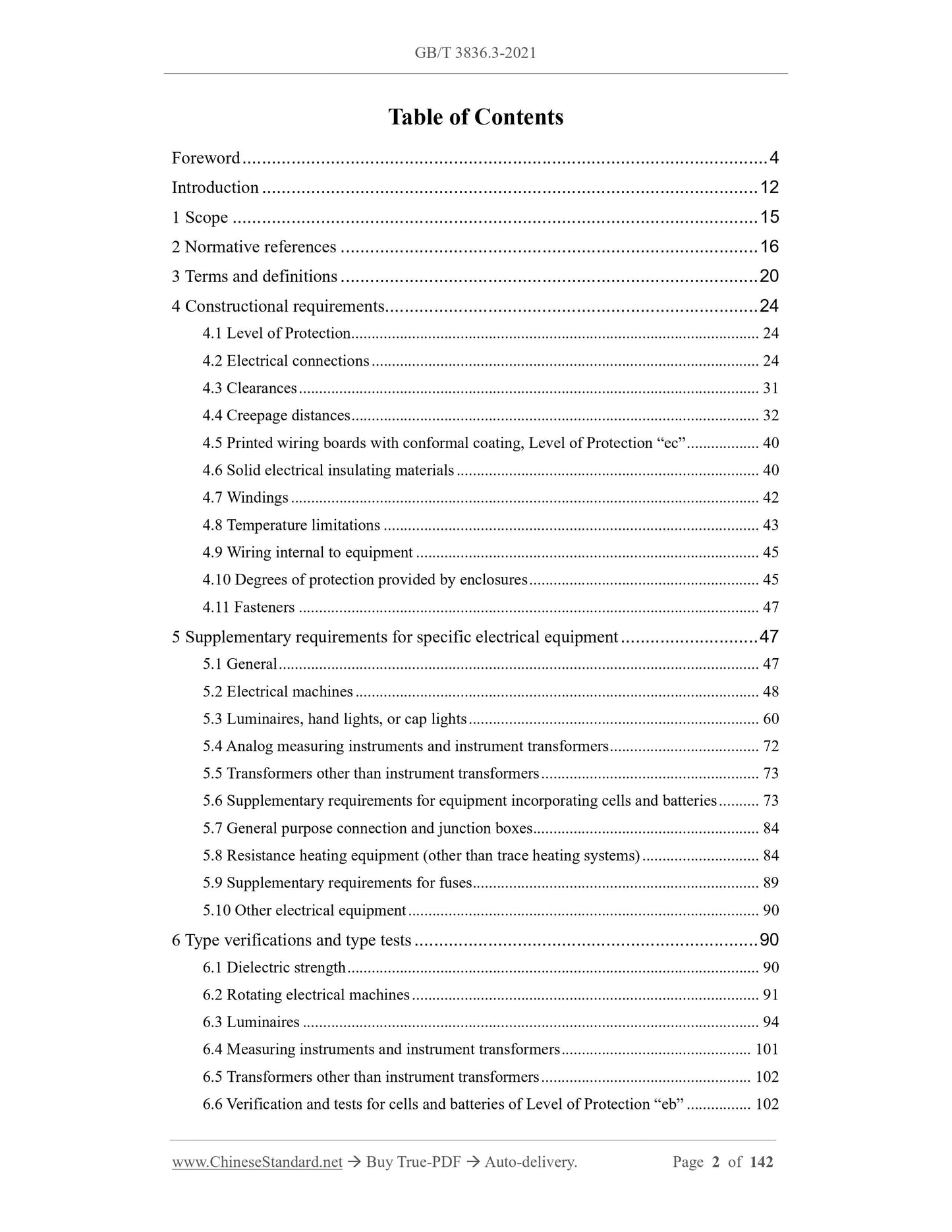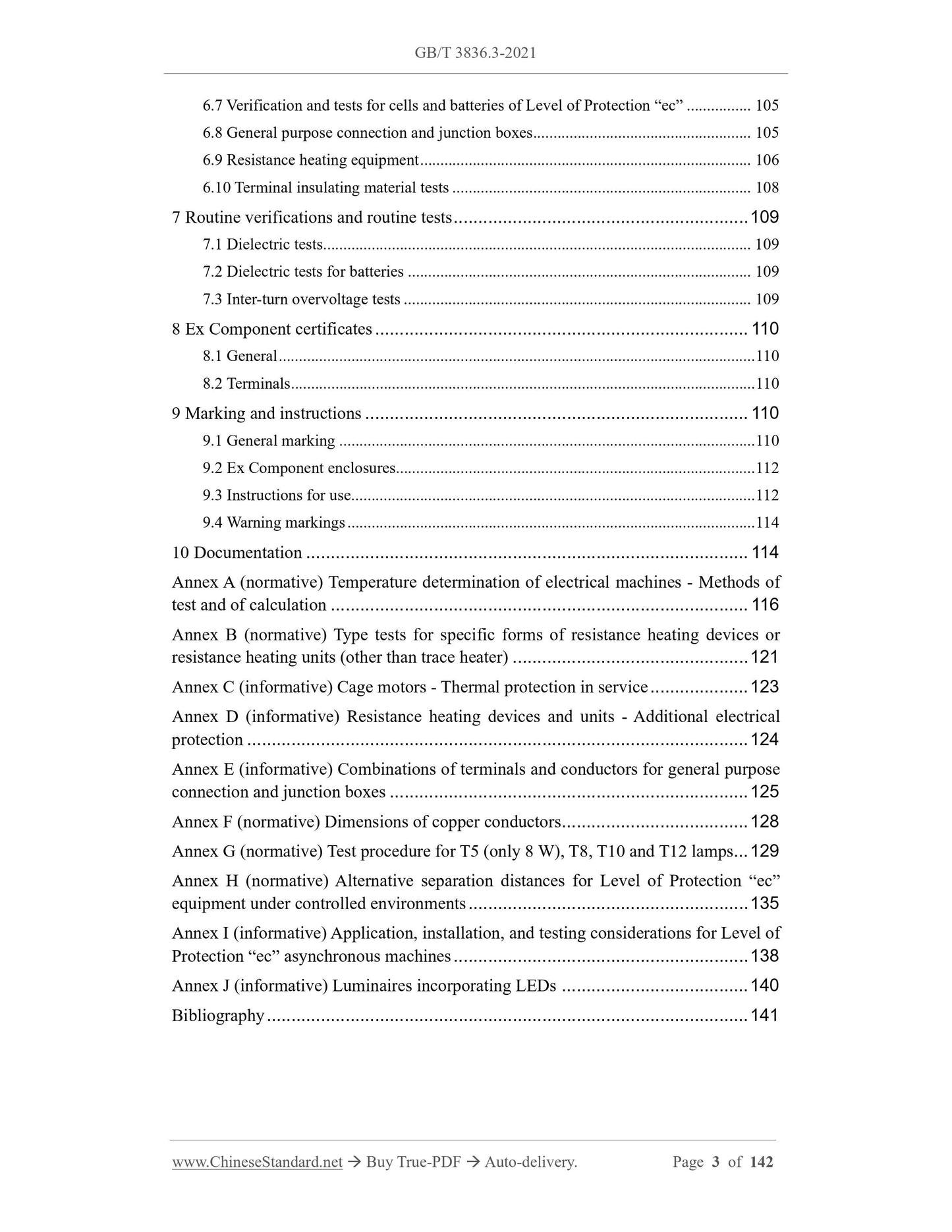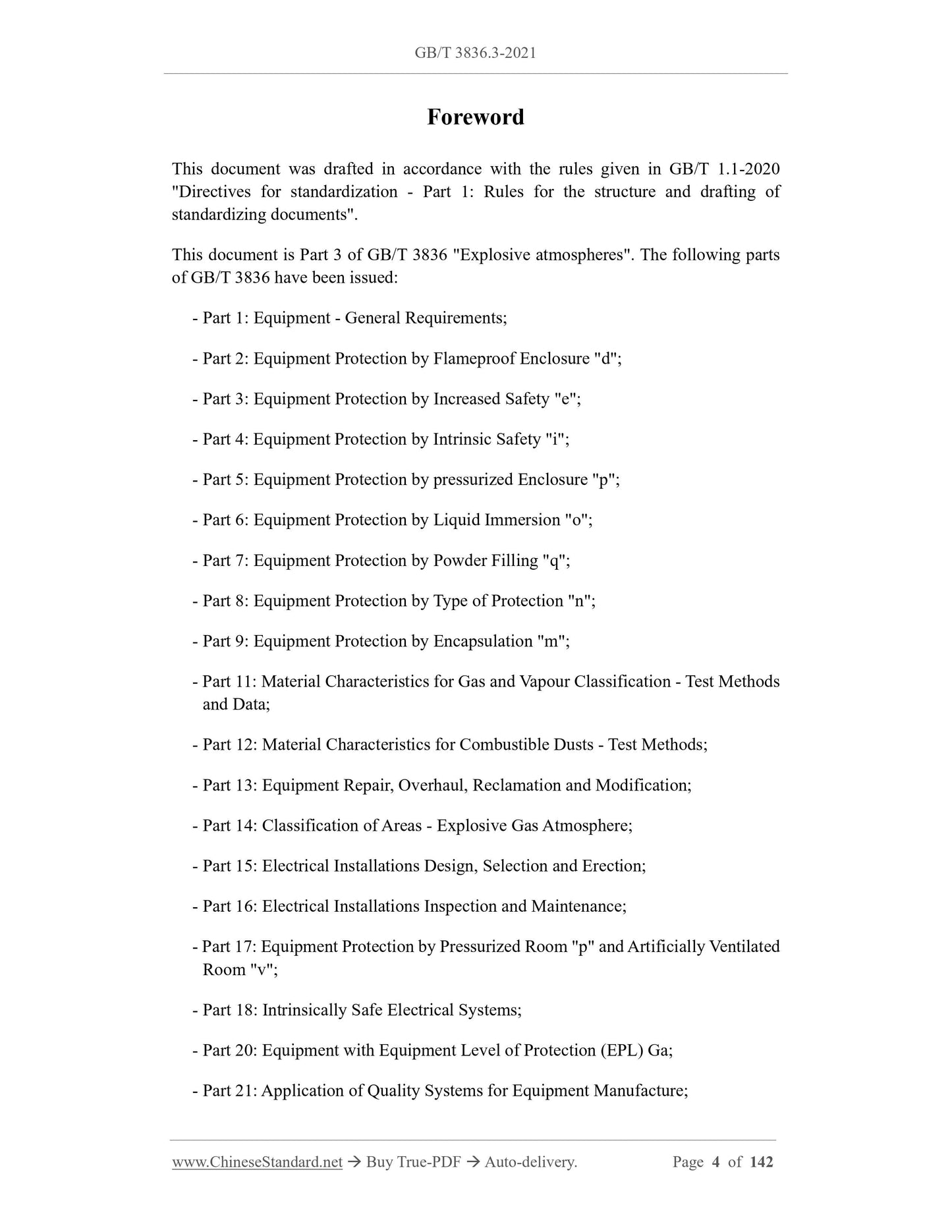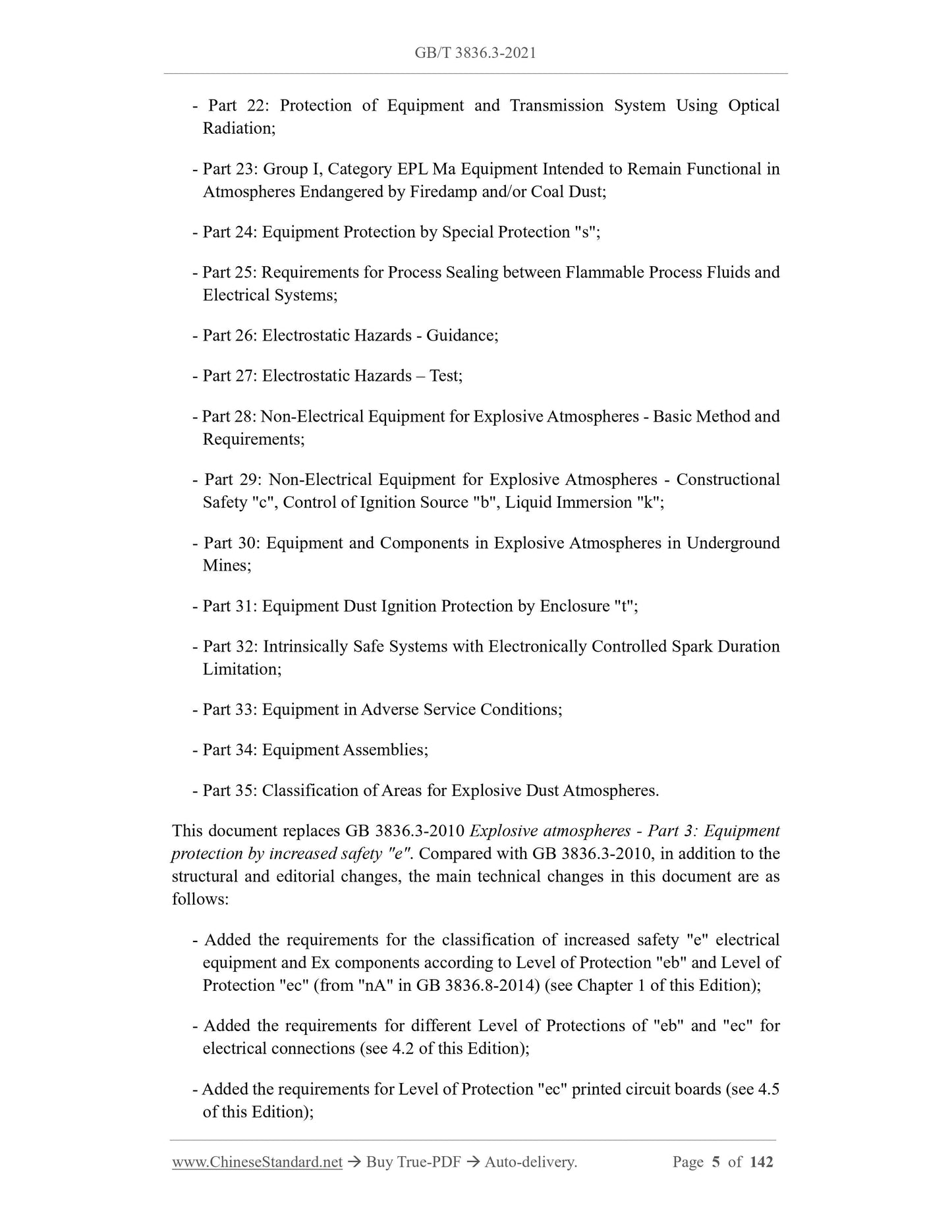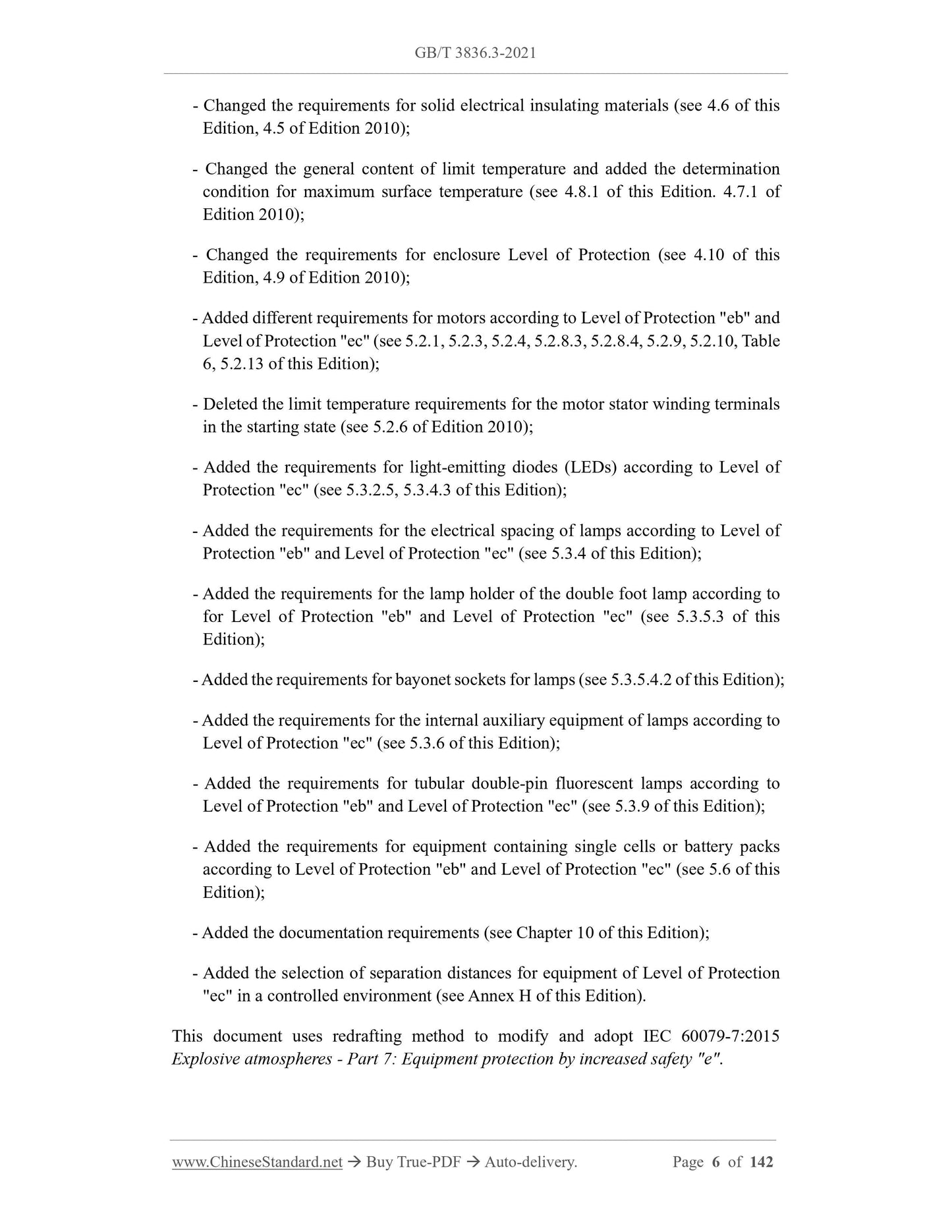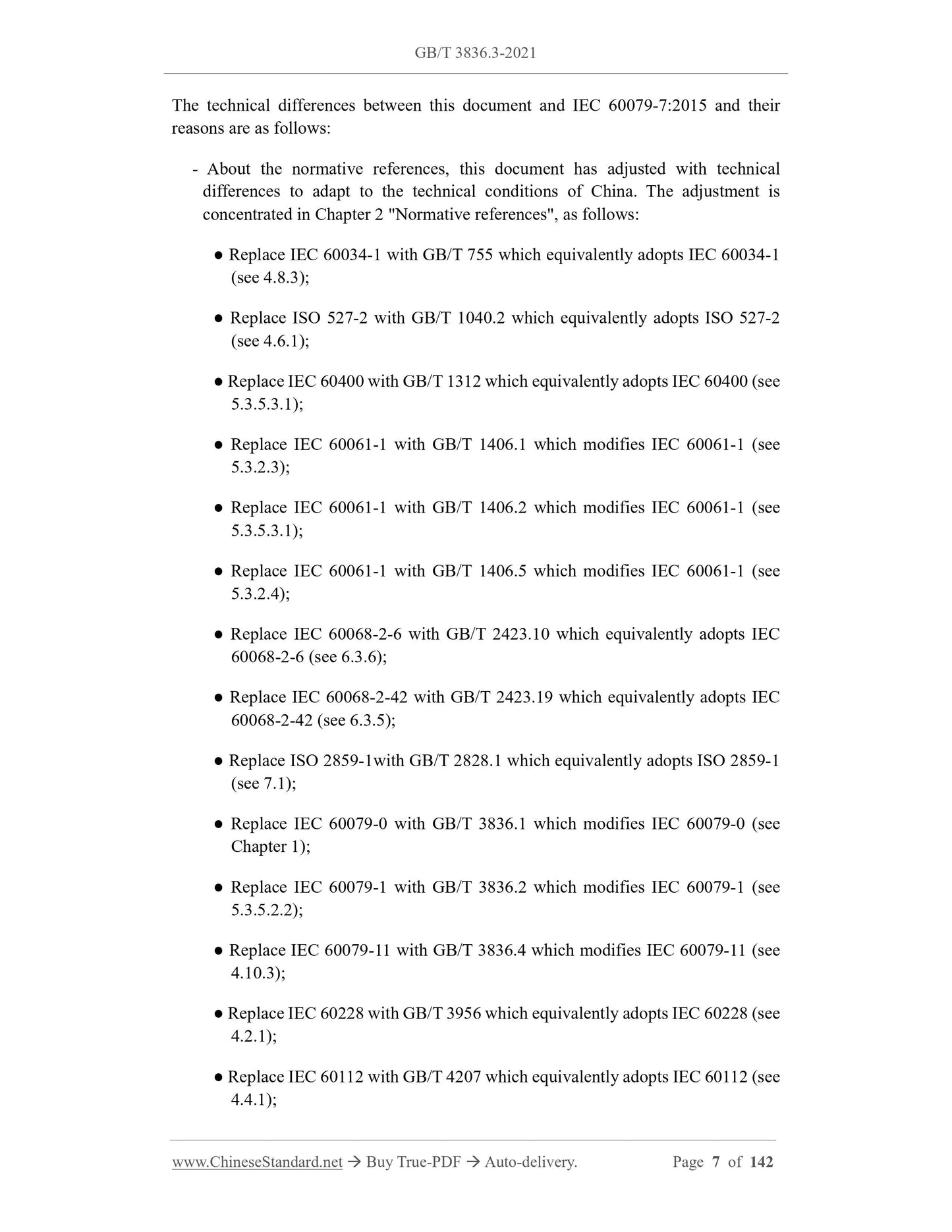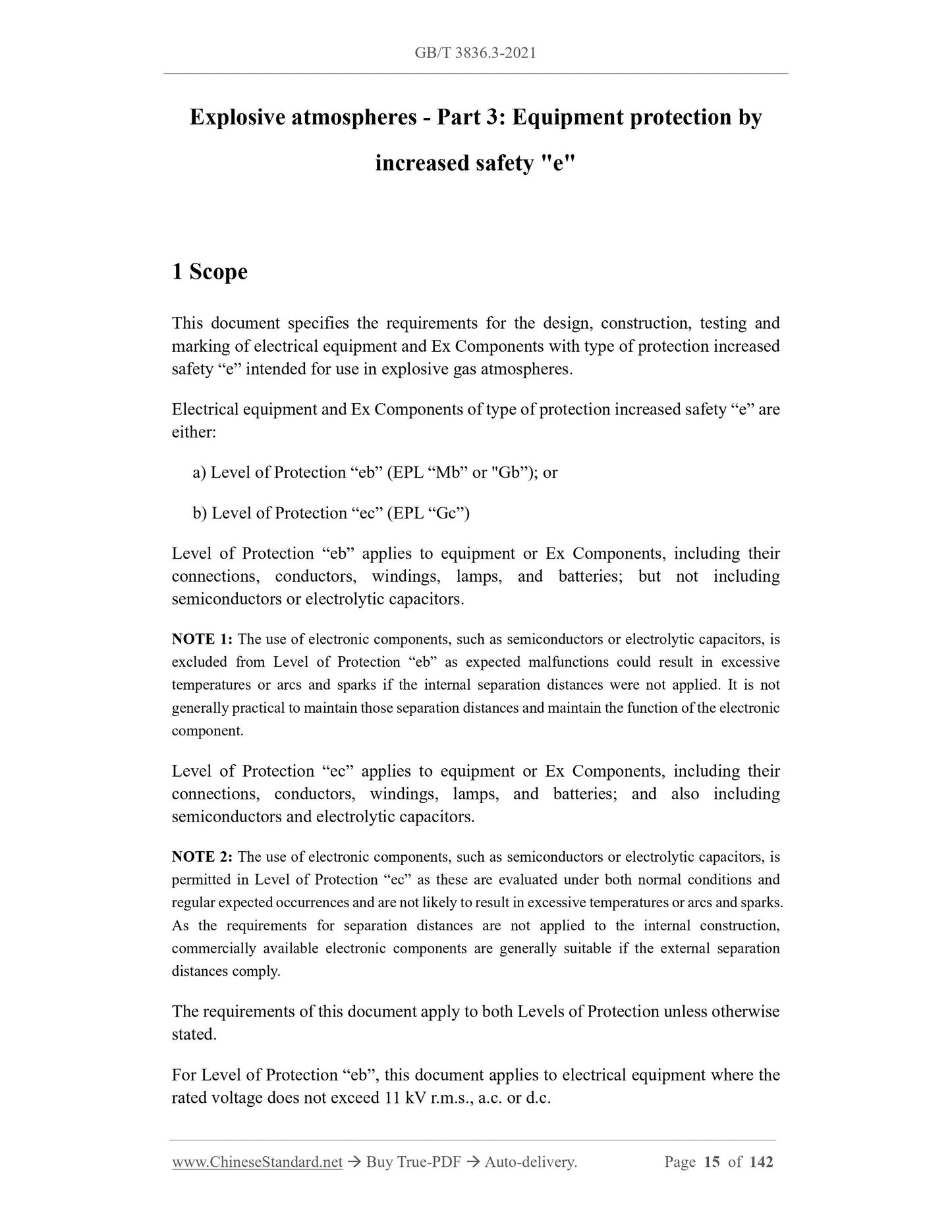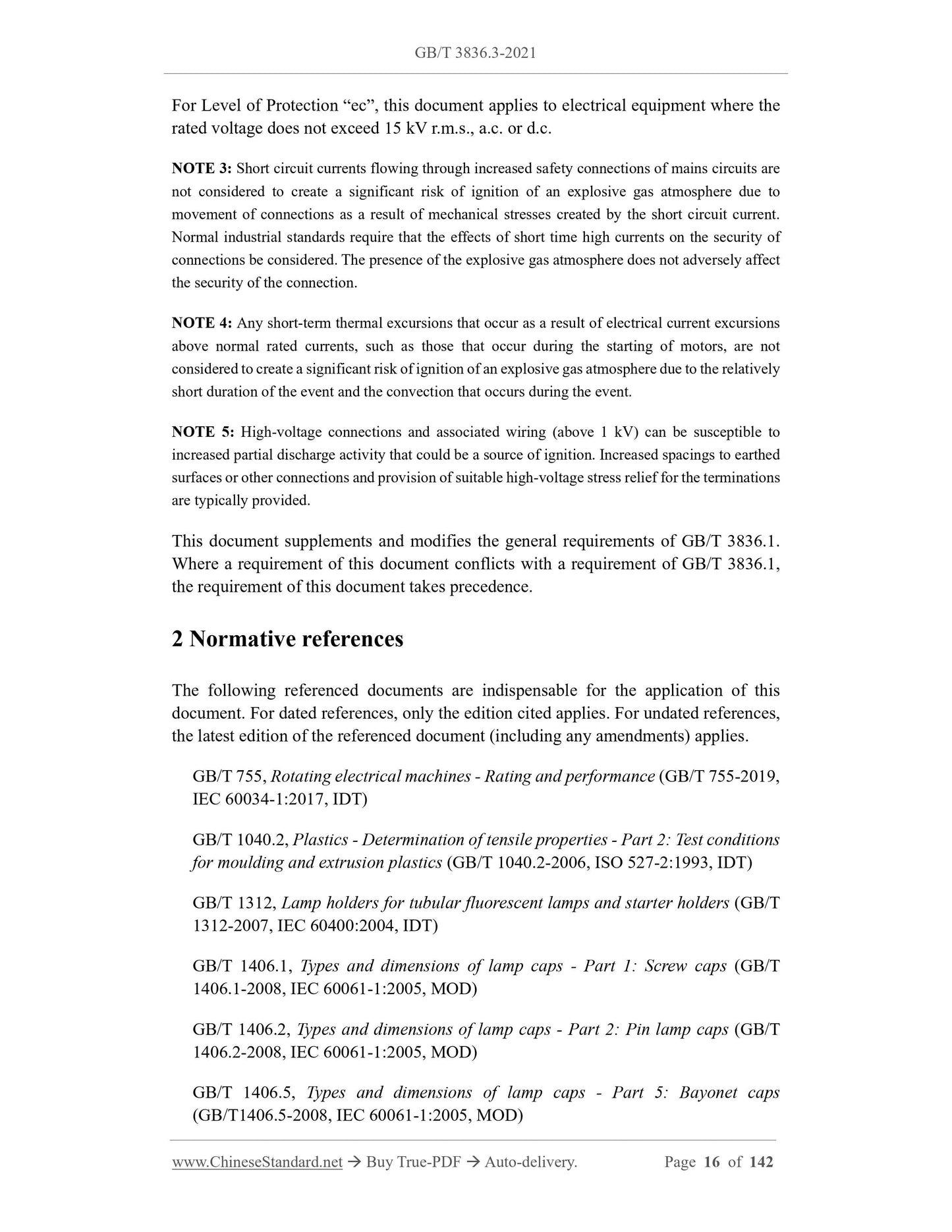1
/
of
9
www.ChineseStandard.us -- Field Test Asia Pte. Ltd.
GB/T 3836.3-2021 English PDF (GB/T3836.3-2021)
GB/T 3836.3-2021 English PDF (GB/T3836.3-2021)
Regular price
$965.00
Regular price
Sale price
$965.00
Unit price
/
per
Shipping calculated at checkout.
Couldn't load pickup availability
GB/T 3836.3-2021: Explosive atmospheres - Part 3: Equipment protection by increased safety 'e'
Delivery: 9 seconds. Download (and Email) true-PDF + Invoice.Get Quotation: Click GB/T 3836.3-2021 (Self-service in 1-minute)
Newer / historical versions: GB/T 3836.3-2021
Preview True-PDF
Scope
This document specifies the requirements for the design, construction, testing andmarking of electrical equipment and Ex Components with type of protection increased
safety “e” intended for use in explosive gas atmospheres.
Basic Data
| Standard ID | GB/T 3836.3-2021 (GB/T3836.3-2021) |
| Description (Translated English) | Explosive atmospheres - Part 3: Equipment protection by increased safety "e" |
| Sector / Industry | National Standard (Recommended) |
| Classification of Chinese Standard | K35 |
| Word Count Estimation | 91,911 |
| Issuing agency(ies) | State Administration for Market Regulation, China National Standardization Administration |
Share
